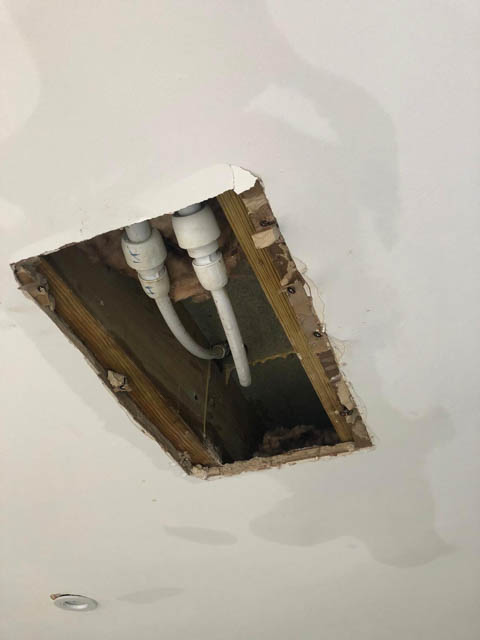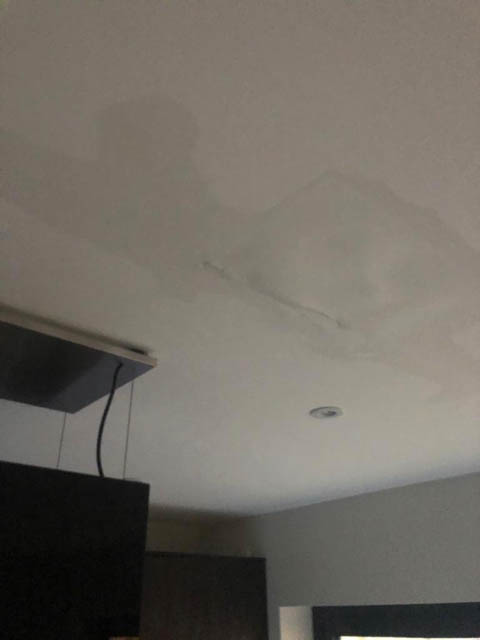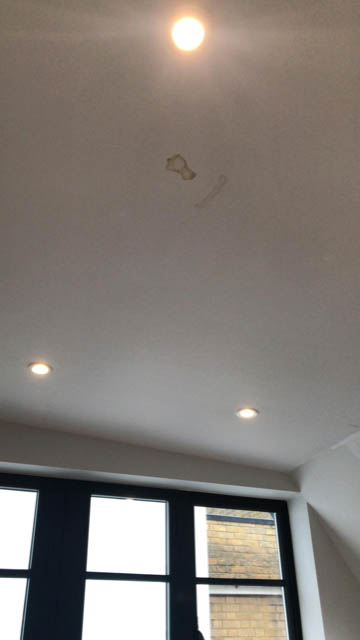What do you do with a water damaged ceiling?
What is the extent of the Water Damage ??
The first thing to do is limit the damage the water leak is making; this might just be putting a bucket or a towel under the leak. Even if you are going to look and see what the issue is, it is best to put this in place first to limit water damage of the room below the leak.
Be aware that if the leak is significant, there is a chance that a section of the ceiling could collapse and this will cause significant damage. Often a ceiling has added layers, and with the weight of water, this can easily be 100kg or more from the water-saturated plasterboard ceiling. Even minor water stains should be treated with caution as modern paints and sealants can hold back significant water leaks.
Often the leak is minor, and the damage is hidden for some time; allowing it to spread across a larger area and causes mould and rot to start affecting the structure of the building.
While images of people holding saucepans are dramatic, they are rarely what happens in reality. Leaks are often slow and come from failed seals around the shower or other areas that need regular maintenance.


Assess the Source of the Problem
The next stage is to work out what has caused the water leak. It might be obvious; children can get carried away in the bath, or a shower screen has not been used properly. However, there are times where the reason for the water damage and drips through the ceiling are not immediately apparent, and this is where a professional leak detection comes in and ties into insurance claims under “Trace and Access”.
Locating the leak is the initial task, but this needs to be carried out with the whole process in mind. There is the access of the leak and restoration works to consider, along with drying the property and returning it to its pre-leak condition. Your building’s insurance covers most leaks; but in the case of poor maintenance, forgetting to keep up with sealant can become very expensive as your insurer would not normally cover it.

Dry Properly for Repairs that last
A vital part of any leak is making sure the area of water damage has been dried correctly, and immediate action has been taken. We recommend that mitigation drying is installed immediately on locating the leak as this limits the spread of water damage and assists in halting mould and mildew growth. These can become a health hazard, and their impact can be significant, particularly to infants and the elderly; even more so with the current raspatory risk from corona virus CV-19.
Once the leak has been stopped and the area dried, either a simple repaint of the area can be carried out with a water stain blocking agent used as a primer. Or in the case of significant water damage, this may require a larger repair and re-plastering of the ceiling and possibly walls as well.

